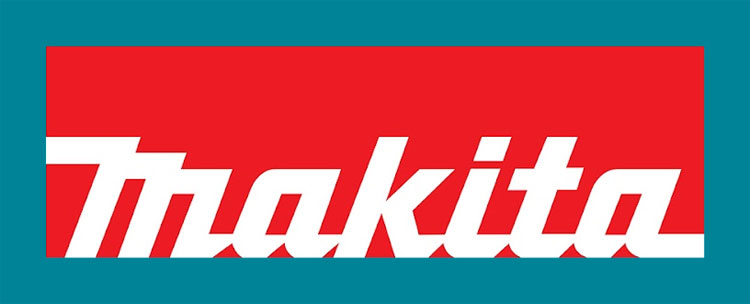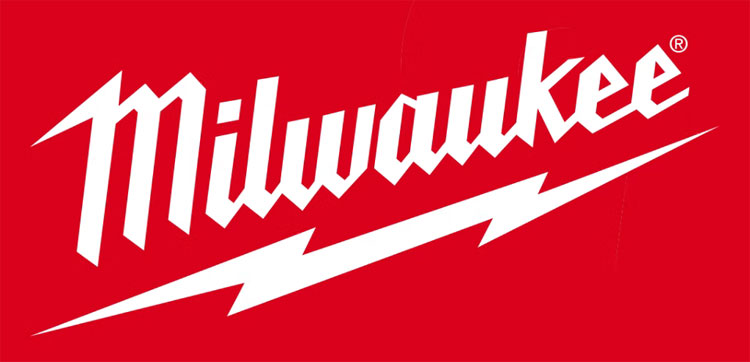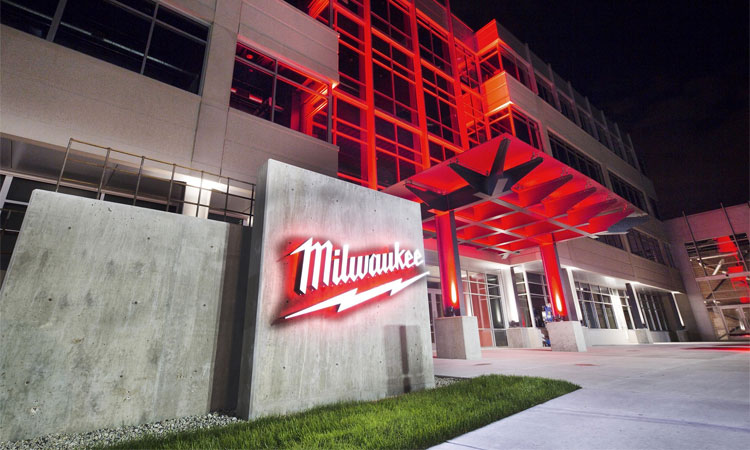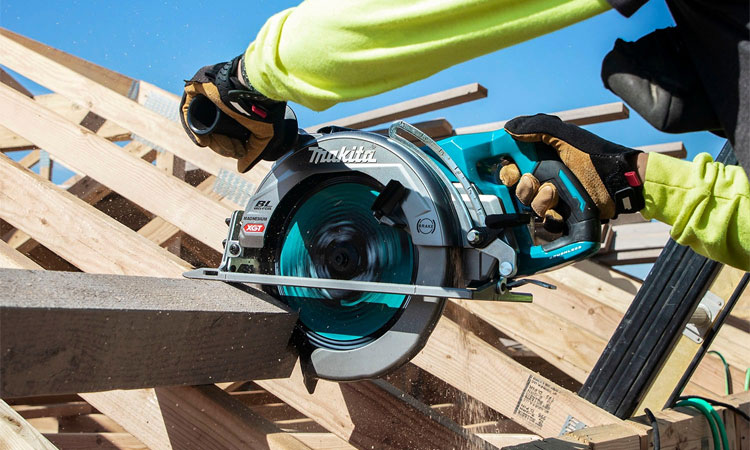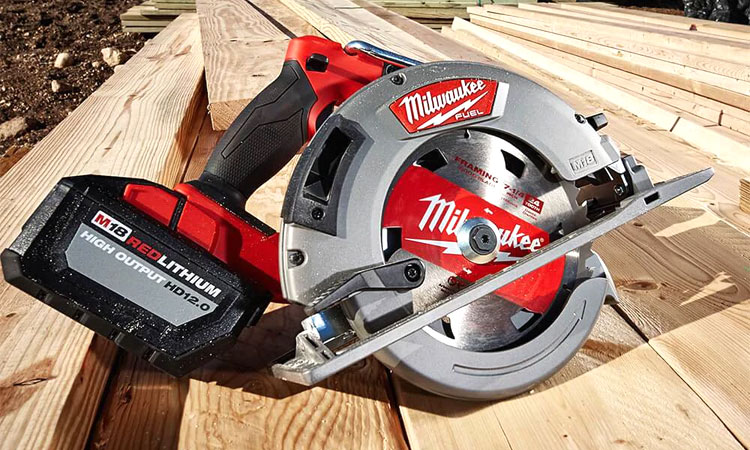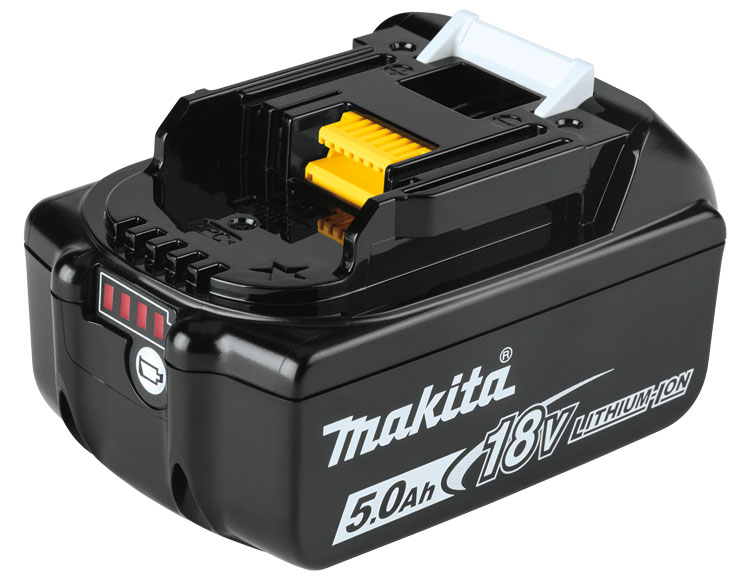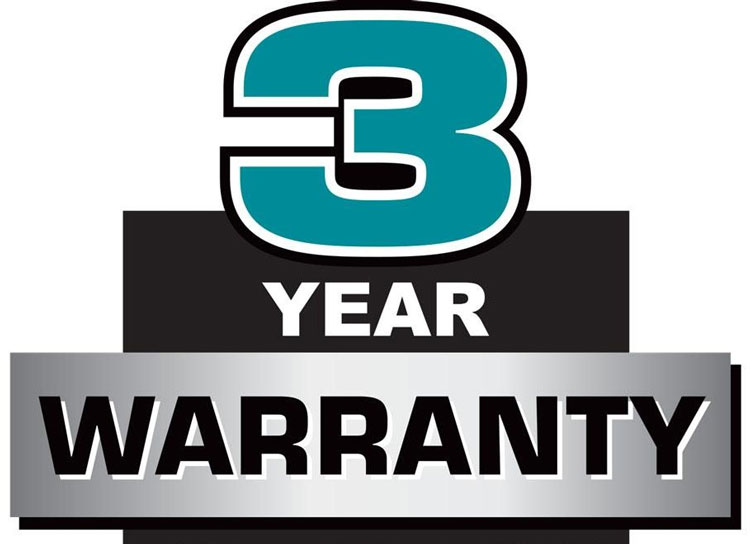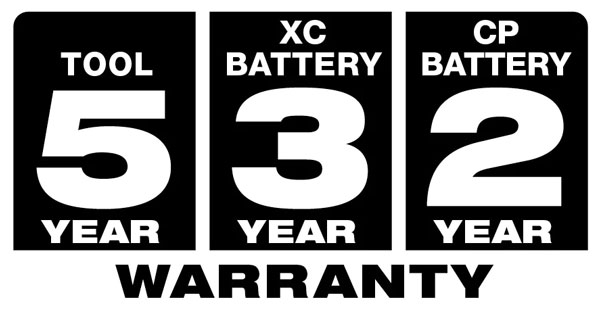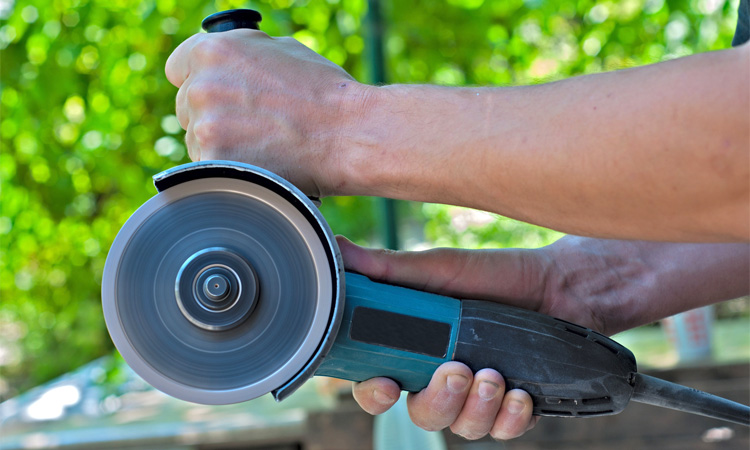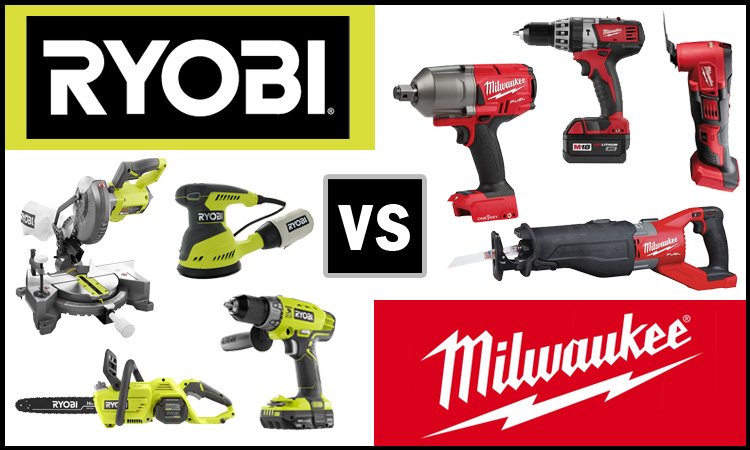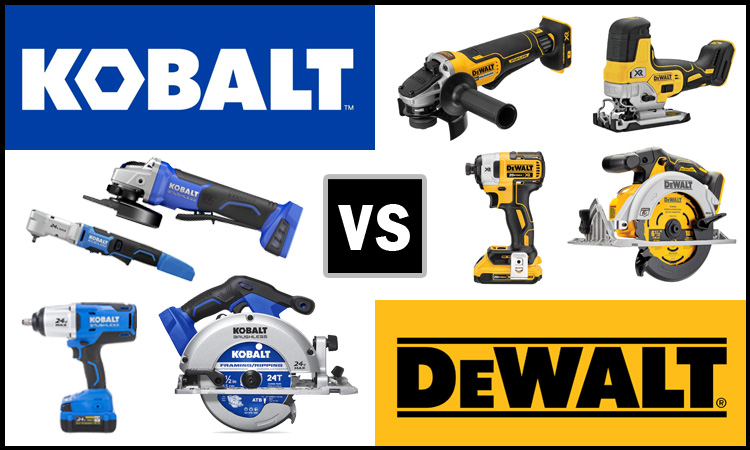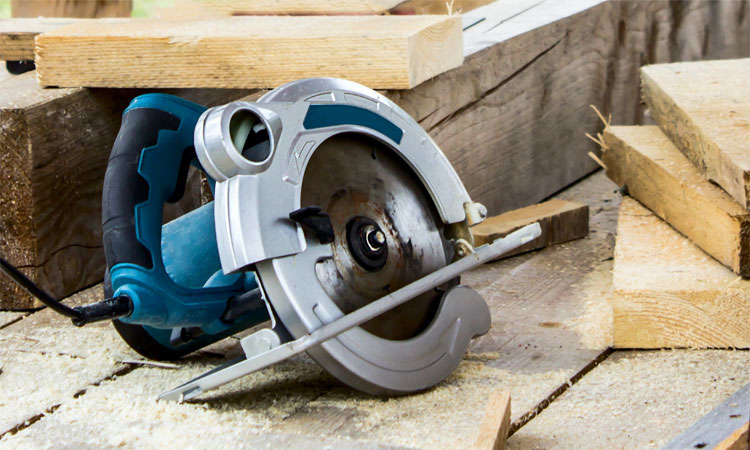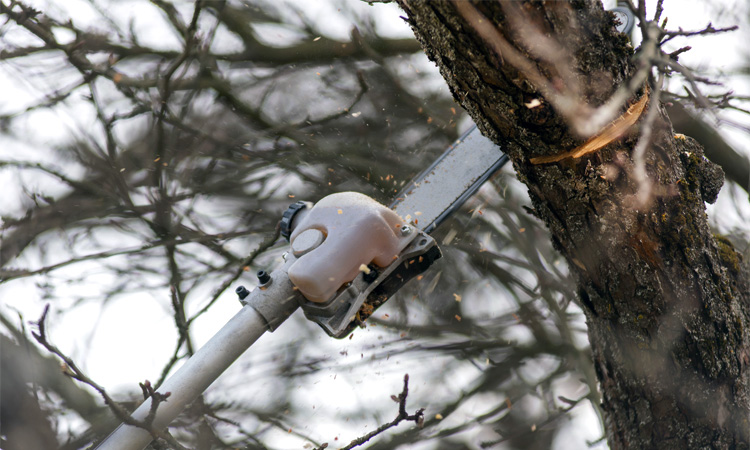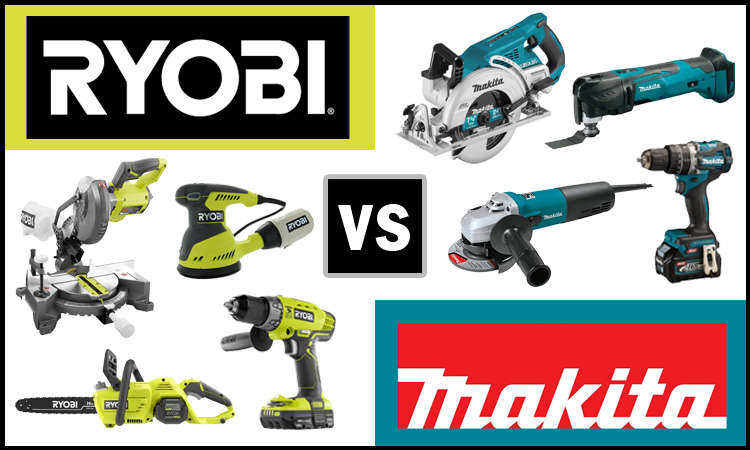Makita vs Milwaukee (Which is Better?)
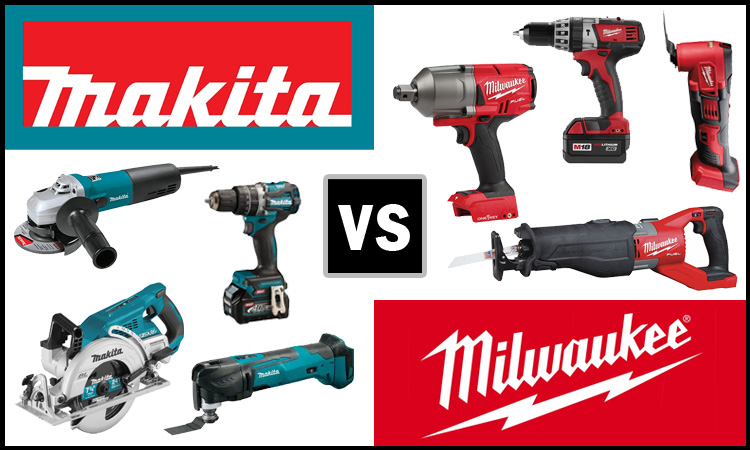
In the world of modern power tools, there are no shortage of top-notch manufacturers, who produce premium-grade tools on an ongoing basis. However, of these manufacturers few are quite as big in stature or reputation as Makita and Milwaukee, both of which are well-respected by hobbyists and tradesmen alike.
Nonetheless, this in itself poses quite the quandary. Between these two brands, which is the overall favorite, offering unparalleled quality and service. Unfortunately, discerning a winner between these two titans of the tool industry is anything but easy, as both Makita and Milwaukee have forged substantial legacies of greatness.
To better compare the two brands, we have compiled the following guide, which situates Makita and Milwaukee side-by-side, in a number of key areas. Read on to learn more about how each brand stacks up, when compared to one another, based upon various criteria.
History
About Makita Tools
Makita Electric Works, of Nagoya, Aichi, was founded in 1915. In its earliest years, Makita manufactured lighting equipment, electrical motors, and transformers. The company also regularly repaired equipment of the same variety.
In 1958, after several decades dedicated to generator manufacturing, Makita began manufacturing portable electric planers. This initial power tool offering proved quite successful and a portable groove cutter was released later the same year.
By the 1960s, Makita had converted its business model, which now centered around the production of power tools. Then, in 1969, Makita released their first battery-powered drill, the 6500D, which also found substantial success.
During the 1970s, Makita expanded into foreign markets, including France, Australia, Canada, Germany, and the United States. This was followed by the diversification of Makita’s product catalog, which soon included circular saws, grinders, and impact drivers.
In 2004, Makita developed brushless motor fastening tools for the defense and aerospace industries and expanded this line in 2009 with the first 18V brushless motor impact driver.
Today, Makita is known as one of the most prevalent manufacturers of rechargeable battery-powered tools. Its various offerings are sold around the world, with its consumer base steadily growing.
See Also: Makita vs DeWalt (Power Tool Comparison)
About Milwaukee Tools
At the end of WWI, Henry Ford, an American automotive industrialist, approached A.H. Petersen, a tooling manufacturer, with a special request. He requested Peterson try to develop a portable, lightweight ¼” drill. Peterson was able to fulfill Ford’s request by producing a 5-pound drill with a Westinghouse motor that became known as the “Hole Shooter”.
Peterson later established the A.H. Petersen Company with partner A.F. Siebert. Unfortunately, this fledgling company was crippled by an early plant fire, which ultimately brought about financial ruin. However, in 1924, Siebert purchased the company’s remaining assets at auction and officially formed the Milwaukee Electric Tool Corporation.
Over the next few years, engineers spent most of their time repairing other tools that were already on the market. They also spent considerable time studying and experimenting with ways to make the “Hole Shooter” better and more durable.
Milwaukee also expended much effort into achieving acceptable specification ratings from the government. By 1930, several of Milwaukee’s tools were manufactured to the Navy’s specifications.
During WWII, Milwaukee’s Hole Shooter was used extensively by American armed forces, in the production of military aircraft. In 1951, the revolutionary Sawzall reciprocating saw was introduced by Milwaukee. Another key Milwaukee development of the era was the ½” right-angle drill.
In the 1970s, Milwaukee was acquired by Amstar, thereby leading to subsequent manufacturing expansion. Several new manufacturing plants and warehouses began to spring up, particularly over the south in the years to come.
Milwaukee Tool Company was purchased in 2005 by Techtronic Industries Company and employs approximately 1,000 workers worldwide. The company remains best known for its production of industry leading portable power tools.
See Also: Milwaukee vs DeWalt (Power Tool Comparison)
Manufacturing
Where Are Makita Tools Made?
Makita Tools is headquartered in Nagoya, Aichi, Japan, but operates manufacturing facilities around the world. The company also maintains home offices for various markets, in several different countries, including the following.
- United States
- Brazil
- Mexico
- China
- Japan
- Germany
- Romania
- Thailand
- United Kingdom
The Makita USA head office is located in La Mirada, CA but has a large distribution network that spans across the United States. Makita distribution warehouses are operated in the following cities.
- La Mirada, CA
- Buford, GA
- Mt. Prospect, IL
- Wilmer, TX
Where Are Milwaukee Tools Made?
Milwaukee Tools is headquartered in Brookfield, Wisconsin. Much like Makita, Milwaukee manufactures tools both domestically and internationally.
The majority of Milwaukee’s US manufacturing and warehousing efforts take place in the following cities.
- Kosciusko, Mississippi
- Olive Branch, Mississippi
- Jackson, Mississippi
- Blytheville, Arkansas
- Greenwood, Mississippi
- Mukwonago, Wisconsin
Outside of their domestic operations, Milwaukee also produces a number of their portable, battery-powered tools overseas. These foreign production facilities exist most prominently in China and Europe.
Read Also: Milwaukee vs Porter-Cable
Product Line
Makita
Makita is best known for its production of electric saws, impact drivers, and drills, the latter of which the company first debuted in 1969. Today, Makita manufactures several different unique power tool lines, though the most popular would have to be the company’s 18V LXT series of tools.
At the moment, Makita offers approximately 270 different power tools within the LXT series, all of which are compatible with the company’s 18V Lithium-Ion batteries.
The LXT line of tools features enhanced battery technology, purpose built motors, and enhanced communication to produce unmatched speed, runtime, and power. Some of the LXT line’s most popular offerings include drills, impact drivers, weed eaters, and even chainsaws.
Larger tools within this line are capable of accepting two 18V batteries, which are paired to provide 32V of total power.
Makita also manufactures a wide array of specialty power tools, designed to accomplish any chore, from yard work to shop cleanup. Some of the most notable of these tools include shop vacuums, leaf blowers, chain saws, and battery-operated lawnmowers. The manufacturer also sells a large assortment of hand tools and portable lighting solutions.
However, Makita’s product offerings also stray beyond that which is battery-powered in nature. The company also manufactures an assortment of pneumatic and gasoline-powered equipment.
From air compressors to chainsaws and hedge trimmers, Makita offers the perfect tool for almost any application. Consumers are also provided with a host of standard corded power or gas-powered tools to choose from as well.
Read Also: Makita vs Ryobi
Milwaukee
Milwaukee offers a numerous amount of portable power tools which are designed for not only professional use, but also for the at-home hobbyist, home improvement, or automotive sector.
These tools span the gamut, serving the hobbyist, home-improvement, and automotive sectors. Milwaukee’s portable power tools also come in several different power settings, allowing for next-level versatility.
The most popular of these power tools are those found within Milwaukee’s M12 lineup. Tools within this series are designed to be compact and lightweight, making them ideal for at-home or hobbyist work. However, the M12 series of power tools are also utilized by many professional tradesmen.
Milwaukee offers its ultra-popular M18 line of portable power tools for those who are seeking additional power. This lineup currently features more than 200 power tools, ranging from impact guns to circular saws. Other popular M18-series tools include nailers, outdoor equipment, work lights, and industrial electrical crimpers.
In 2010, Milwaukee also began manufacturing and marketing their own signature line of hand tools, designed for the discerning professional. Some of the most notable of these hand tools include tape measures, wrenches, ratchets, screwdrivers, pliers, and hammers. Milwaukee also offers its own line of utility knives, as well as a multitude of heavy-duty drill bits.
See Also: Milwaukee vs Ridgid Tools
Technology
Makita
Active 3 Control
All Makita 18V batteries and chargers feature the company’s proprietary Active 3 Control Technology. All chargers of this nature are capable of monitoring a battery’s current, voltage, and temperature.
This system allows communication between Makita’s 18V batteries, and their corresponding chargers, thereby increasing charging efficiency. As a result, charging time is greatly reduced.
Quick Shift Mode
Makita’s latest generation of battery-operated impact drivers now feature the company’s Quick Shift Mode. Makita impact drivers feature an automatic electronic controller that downshifts and reduces rotation and impact speed just prior to driving the screw into place. This shift minimizes thread stripping, breakage, and project damage.
Milwaukee
One Key App
Similar to DeWalt’s Tool Connect app, Milwaukee now offers its own tool management software program, known as One Key. This program allows users to track the location and status of every portable Milwaukee power tool that they own.
The last known date, time, and location can be tracked, while also navigating through a wealth of custom inventory options.
REDLITHIUM Batteries
Milwaukee’s REDLITHIUM line of batteries are designed to work harder and last longer than any other portable power tool battery on the market. These batteries feature specialized circuitry, case design, and chemistry to produce more output even in the harshest conditions.
Milwaukee also offers a line of REDLITHIUM High Output batteries. Each battery within this series is advertised to provide 50-percent greater power than similarly rated batteries, yet run exponentially cooler.
Related: Milwaukee vs Craftsman (Brand Comparison)
Warranty and Service
Makita
Every Makita tool is backed by a 1 year limited warranty that covers defects from workmanship and materials. However, several Makita products are warrantied for longer periods of time.
For the most part, Makita covers its portable, battery-operated power tools with a 3-year limited warranty. This policy protects consumers against any verifiable material or workmanship-related defects. At Makita’s discretion, defects of this type will be addressed, ultimately resulting in tool repair or replacement, free of charge to the consumer.
However, one must mention, this warranty does not cover standard wear/tear related defects, or any issues that arise from the mishandling of any power tool. Defects of this type will be repaired, at the expense of the tool’s owner.
Makita’s also offers a 30-day satisfaction guarantee. If for any reason, you find yourself dissatisfied with one of the company’s power tools within 30-days of purchase, Makita promises to replace the tool in question or provide a full refund of the purchase price.
Milwaukee
The majority of Milwaukee portable power tools come backed by a 5-year limited lifetime warranty. This policy stipulates that Milwaukee power tools will be free of defects in materials and workmanship, for 5-years from the date of purchase. All Milwaukee tools come standard with a warranty without registering your tool.
However, it is worth mentioning that this warranty policy does not protect against defects arising out of standard wear and tear. Any attempted tool alteration or repair by unlicensed individuals will also void this warranty, thereby negating any additional coverage.
Several Milwaukee power tools are not covered by the warranty policy outlined above. In those cases, the tool in question will come backed by an individual warranty policy, as specified by Milwaukee.
Some of the most prominent power tools to fall outside of Milwaukee’s standard warranty policy include the M18 Compact Heat Gun and the M18 FUEL Dual Action Random Orbital Polisher, which are warrantied for 3 years, and the REDLITHIUM laser level carries a 2 year warranty.
Related: Milwaukee vs Snap-On Power Tool Comparison
Makita vs Milwaukee: And The Winner Is…
There is no doubt that Makita and Milwaukee both produce top-tier offerings that far exceed the industry standard in terms of quality and value. However, for the sake of argument, we must crown a single contender as “best of the best”, as the result of our side-by-side comparison. To this end, we feel that Milwaukee is deserving of these top honors.
For decades, Milwaukee has consistently produced a wealth of power tools that meet or exceed the expectations of industry professionals and tradesmen. From job sites to garages, Milwaukee Tools have become a staple of our country’s industrial landscape.
Perhaps most importantly, Milwaukee Tools are known for their unparalleled durability, and ability to perform in exceedingly harsh environments.
Milwaukee is also known for standing behind their tools for the long-haul, even backing the majority of their battery-operated power tools by a 5-year limited warranty policy.
If a defect in materials or workmanship becomes evident during this period, replacement or repair will be facilitated by Milwaukee, without cost to the consumer. This further illustrates Milwaukee’s continued dedication toward excellence in their craft.

